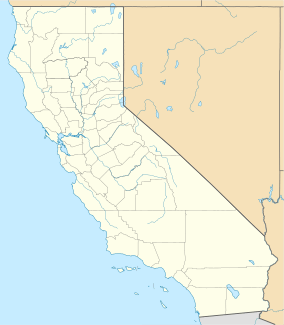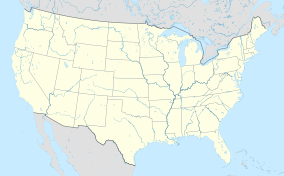Estero Bluffs State Park facts for kids
Quick facts for kids Estero Bluffs State Park |
|
|---|---|
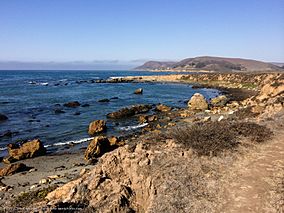
Estero Bluffs State Park
|
|
| Location | San Luis Obispo County, California, USA |
| Nearest city | Cayucos, California |
| Area | 353 acres (143 ha) |
| Established | 2000 |
| Governing body | California Department of Parks and Recreation |
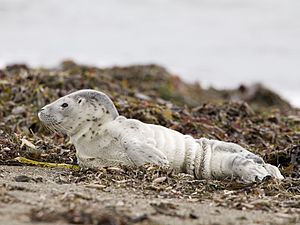
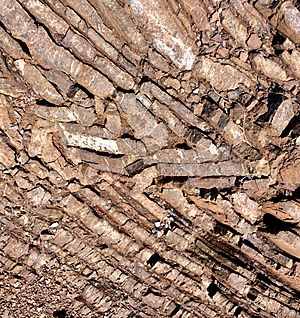
Estero Bluffs State Park is a beautiful state park in California, located right on Estero Bay. This park protects a special area of grasslands that gently slopes from California State Route 1 down to the Pacific Ocean. Two creeks, San Geronimo and Villa Creeks, flow through the park. It's just north of the town of Cayucos. This park, which is about 353 acres big, was created in the year 2000.
Estero Bluffs has many different natural areas. You can find places where the ocean meets the land, wetlands, small cliffs, and coastal terraces. It also has a small cove and beach at Villa Creek. The park is home to many animals, including some endangered species like the snowy plover.
The park's coastline stretches for over 4 miles and covers more than 300 acres of land. Even though the shoreline is usually close to the highway, the land has been kept mostly natural. This means it looks very similar to how it did a long time ago.
Estero Bluffs offers many scenic spots along its coast. Visitors can park and explore San Geronimo Creek or Villa Creek. These are small lagoons that have water all year round from constantly flowing creeks. There are also several lookout points, like Cayucos Point, which offer great views of Estero Bay.
Park History
The Estero Bluffs area has been home to Native American people for over 10,000 years. The Chumash and Salinan people lived here. They used resources from both the ocean and the land to survive and adapt to changes in nature. In 1769, Spanish explorers from the Portolá expedition traveled through this area. Sadly, with the explorers came new diseases that made many native people sick.
From 1771 onwards, this land was used for grazing cattle. In 1842, Mexico gave a large piece of land, called Rancho San Geronimo, to Rafael José Serapio Villavicencio. Much of today's Estero Bluffs State Park was part of this ranch. Over the years, the land was owned by different people. Eventually, Abram Muscio bought it, planning to build a resort and homes. However, people from nearby communities wanted to protect the land instead.
The Trust for Public Land bought the property in 2000. They then gave it to California State Parks in 2002. The Trust made sure that the land would be protected. They put rules in place that limit certain activities, like building public restrooms or using running water, to keep the park as natural as possible.
Park Geology
The land at Estero Bluffs State Park is built on very old rocks. These rocks are part of something called the Franciscan Assemblage. They formed about 140 million years ago, during the late Jurassic Period. Over a very long time, the Earth's tectonic plates moved. This movement pushed the land up from under the sea. That's how the beautiful seaside cliffs you see today were created.
Amazing Plants and Animals
Estero Bluffs State Park has several different types of land, and each one has its own special plants.
- The coastal scrubs and grasslands are home to plants like sagebrush and beautiful native flowers.
- The rocky areas have wild grasses and wildflowers that bloom at certain times of the year.
- The sand dunes and wetlands often mix together. Here you can find plants like salt grass.
The park is also full of interesting marine and land animals.
- In the ocean, you might see harbor seals and sea otters. Sea otters are a threatened species, which means their numbers are getting low. These animals use the areas where the ocean meets the land to rest and find food.
- From December to March, you can often see migrating whales passing by. Gray whales are especially common during this time.
- On land, the grasslands and coastal scrub areas are home to rabbits, ground squirrels, striped skunks, and other small animals.
- You might also find black-bellied slender salamanders, California kingsnakes, Pacific tree frogs, rattlesnakes, and many different insects in the grasslands.
- The park is also a great place for birdwatching. It hosts a variety of birds, including the rare western snowy plover.


